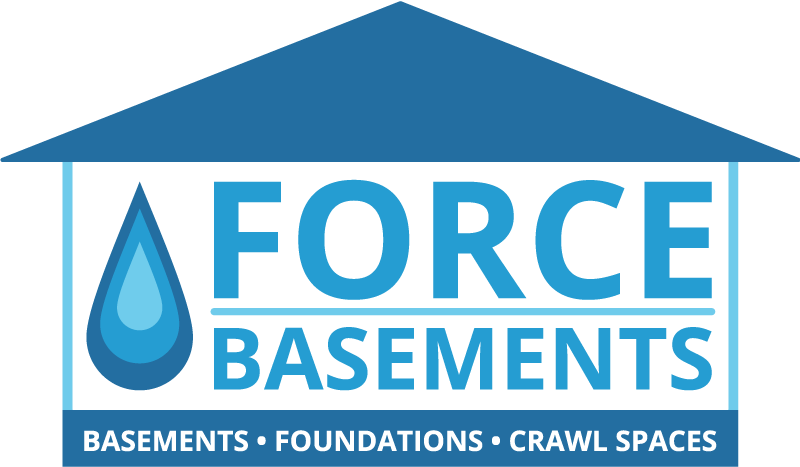Concrete Leveling Process
Get a Free Estimate!

Polyjacking vs. Mudjacking
One concrete leveling technique commonly used by Force Basements is polyjacking. This method can help to eliminate tripping hazards, stabilize settled concrete, and keep concrete out of landfills. Additionally, minimizing the evidence of concrete repair is minimal. Polyjacking is more cost-effective than concrete replacement and more lightweight than mudjacking. Force Basements can complete a polyjacking project in a matter of hours — not days — with no damage to grass or landscaping.
Polyjacking
Polyjacking uses high-density geo-technical expanding foam to raise and stabilize concrete slabs. The material and equipment needed for polyjacking is like the material used in spray foam insulation — however, the foam used for lifting concrete is a lot stronger. The first step in the polyjacking process is to drill penny-sized holes in the damaged concrete slab. The high-density foam is sprayed through the holes and will begin to fill all the voids below the concrete. The foam can expand up to 7 feet at each injection site, raising the concrete while stabilizing it and filling any gaps between the concrete and the soil.
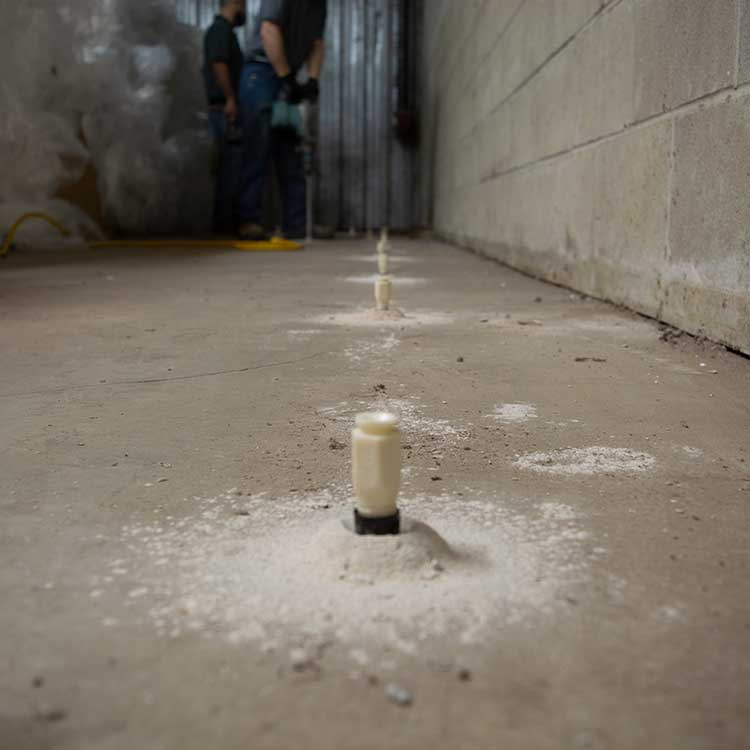
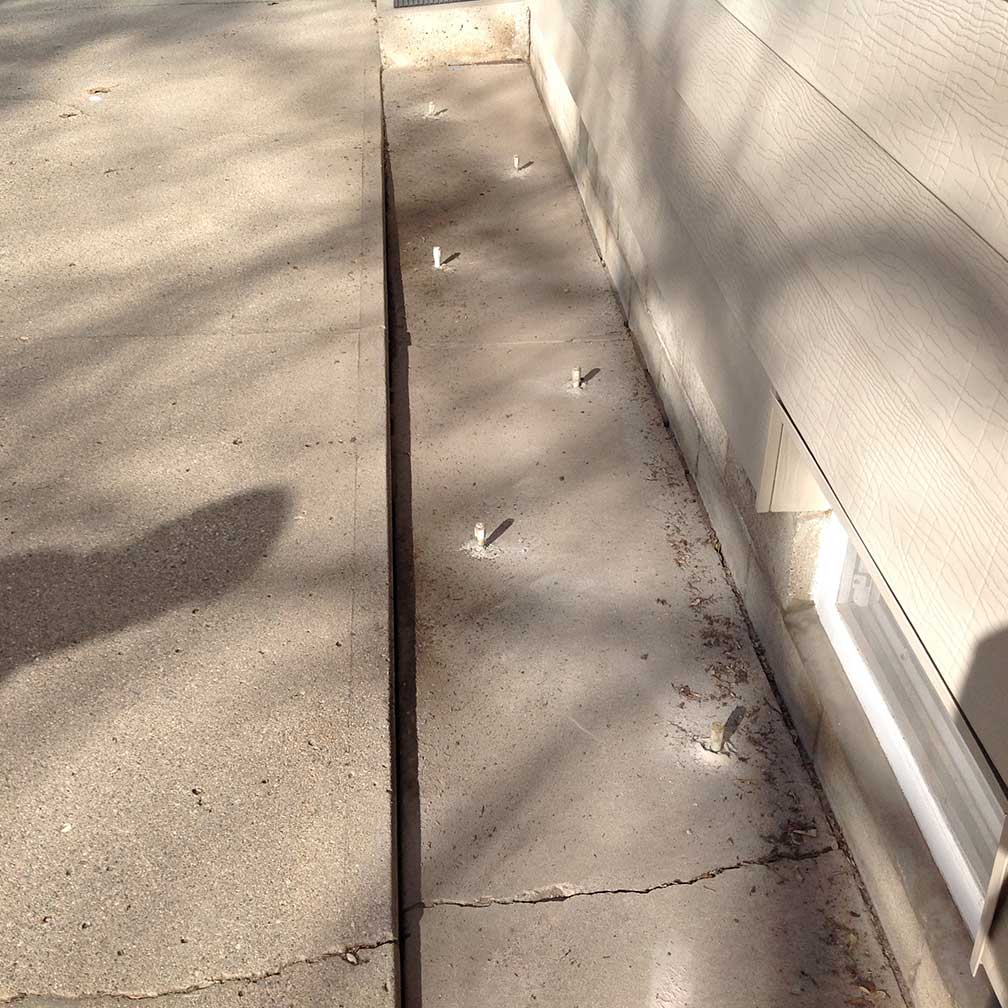
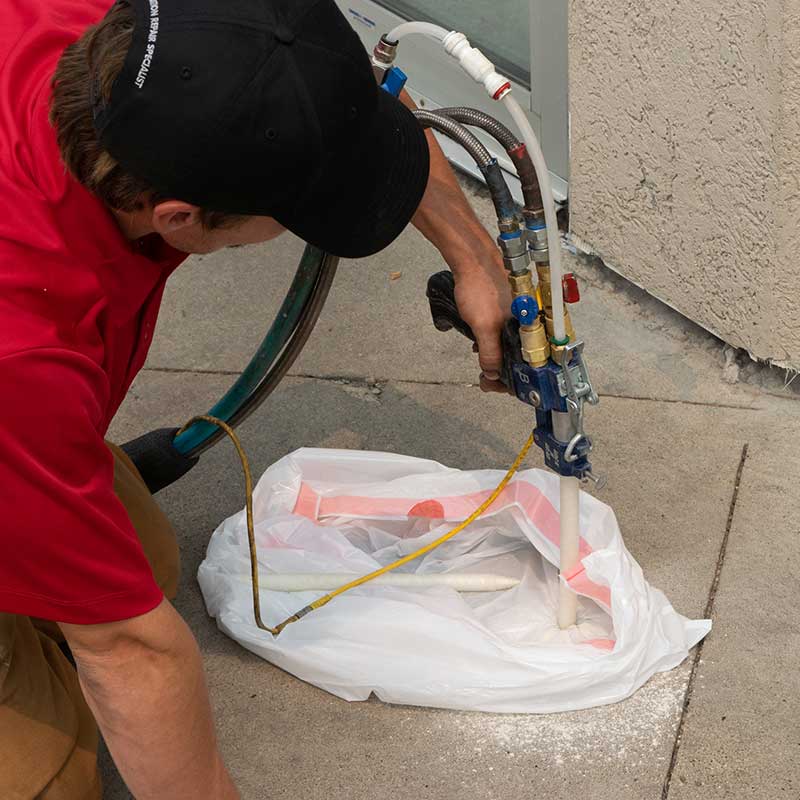
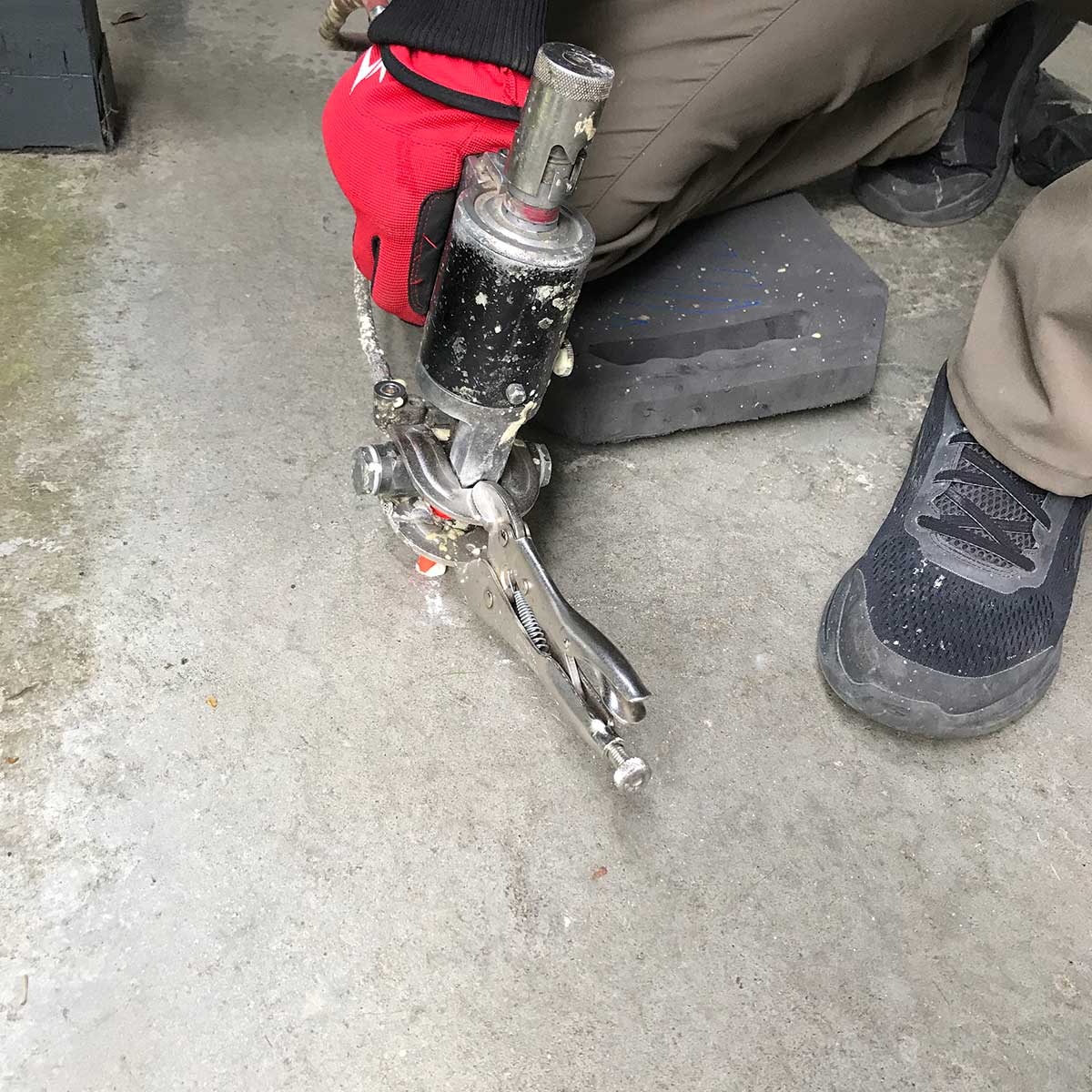
Mudjacking
Mudjacking, on the other hand, is a technique that uses sand, cement, and other materials to raise and level a concrete slab. These materials are mixed into a slurry and pumped into drilled holes. Mudjacking is best for concrete that is in good condition but is no longer level. However, mudjacking isn’t always the best choice. It won’t work for slabs that are heavy or load bearing. It can also cause more problems for severely damaged concrete — mudjacking can’t fill every hole and may lead to sinking over time.
So, why use polyjacking instead of mudjacking to level concrete? The slurry used in mudjacking is not waterproof and can erode over time if water drains along the sides and underneath the slab. Polyjacking will not break down over time. The foam is waterproof, quickly expands and hardens, won’t degrade due to temperature extremes, and has no chemical leaching, so it is environmentally friendly. Polyjacking can also withstand more weight and use than mudjacking. Ultimately, polyjacking results in a more polished final product. Fewer resources and heavy equipment are required, so the job site is neater, the surrounding landscape isn’t damaged, and the disruption to your home or business is minimal.
Trust the Experts
When picking your professional, ensuring they’re a true concrete expert is important. Why? Because if you’re not, you haven’t seen firsthand all the different variables and obstructions that could lie underneath. For example, sometimes concrete pads are tied into a home’s foundation or a planter. Other times, when the concrete settles in a certain way, it could cause wedging between it and the structure. If any of the above is an issue and not caught beforehand, you could end up with the foam, mud, or whatever materials used to lift it inside your home; if it’s tied in or wedged, it could lift and break the structure as well. Most companies hold themselves harmless to this sort of thing inside the fine print.
Force Basements is uniquely qualified to handle your concrete leveling with years of experience in professional masonry and concrete services. We’ve built our reputation on high-quality work and exemplary customer services — but our work speaks for itself.
Service Area
Force Basements proudly provides foundation repair, basement waterproofing, bowed wall repair, and crawl space repair services to homes and businesses in Bloomington, Peoria, the Quad Cities, and surrounding communities.
